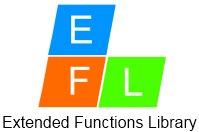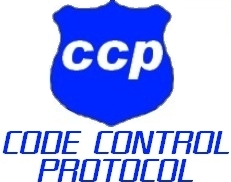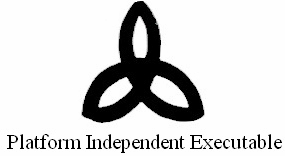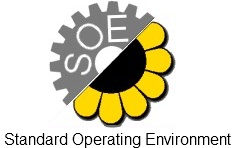|
|
VAUIOS (an abbreviation for Visual Audio User Interfaced Operating System) is an operating system developed by XASE Labs for use on personal computers, including home and business desktops, laptops, and media centers. VAUIOS uses a hybrid 32-bit kernel, and it supports mainly IA-32 and x 86-64 instruction set architectures.
the word VAUIOS, A,) meaning that it is an Operating System and B,) that it has two main types of output, Visual (Seen) and Audio (herd).
The words "User Interfaced" refers to the fact that it has an imbedded system to interact with the computers hardware, an interface between the user and the kernel, better known as a shell. By default VAUIOS uses SOE as its default graphical user interface; however this can be changed by the user at any time.
| Status: In Development | Version: alpha v0.3 |
| Licence: FreeBSD, Open Source | Documentation: N\A |
| Downloads: N\A | Website: N\A |
The Extended Functions Library is a set of free and open source, high-level cross-platform C++ libraries designed to add enhanced features to the standard output methods used in C++. Such as enhanced console functions like colour and title changing, screen clearing, added text buffering, timers etc.
An example of a program using EFL,

Above: RGB2HEX, running on a Windows 7 32-bit system,

Above: RGB2HEX, running on Ubuntu 10.4 a Debian GNU/Linux based operating system,
| Status: In Development | Version: alpha v0.1 |
| Licence: FreeBSD, Open Source | Documentation: N\A |
| Downloads: N\A | Website: SourceForge.net® Project Web Page |
![]()
Tomahawk is an interpreted, general-purpose free and open source high-level programming language, with a design focus of platform independent executable code. Tomahawk works by using precompiled executable code stored in the operating systems native format, to form a library of function's which can then be called upon by the Tomahawk command line interpreter.

Above: Tomahawk runtime, running on a Windows 7 32-bit system,
Tomahawk was also designed with, and to work with the User Interface Mark-up Language UIML.

UIML stands for User Interface Mark-up Language, It provides a means to create interactive forms by denoting structural semantics for text such as checkboxes, radio buttons, push buttons, one-line text input field, password input field, image box's, and other various input elements. It is written in the form of UIML elements consisting of "tags" surrounded by angle brackets within the forms content. It can embed Code from other languages such as the Tomahawk scripting Language or USL which affect the behaviour of UIML forms. UIML can also be used to include a variant of Cascading Style Sheets (CSS) to define the appearance and layout of text and other material.
An example of UMIL using the Tomahawk scripting Language,
start main()
{
string interface = "<uiml>
<window width="208" height="151" icon="default">
<title>Tomahawk UIML demo</title>
</window>
<frame>
<label width="150" height="20" value="Hello world!" location="11,15" fontsize="21" fontface="arial" fonttype="bold">
<input type="PushButton" width="120" height="45" value="PushButton!" action='end();' location="10,58">
</frame>
</uiml>";
uiml(interface);
}
function end()
{
terminate();
}
The above code would output something similar to the image below,

Note output may very depending on system type,
Note the image below was taken with special software (to include the cursor.)
| Status: In Development | Version: alpha v0.1 |
| Licence: FreeBSD, Open Source | Documentation: N\A |
| Downloads: N\A | Website: N\A |
CCP or Code Control Protocol is a revision control system developed for the VAUIOS Operating System. Developers use Code Control Protocol to maintain current and historical versions of files such as source code, web pages, and documentation. Much like (CVS) or (SVN), But instead it uses an adaptation version of the Extensible Mark-up Language, stored under a codes comments section to control versions, and monitor changes.
Code Control Protocol is planned to be platform independent as well as free and open source, with SDK's available for easy integration in to an IDE or server.
An example of CCP would be,
// <CCP>
// <ccp_version="0.1 - Bata" />
// <author="Authors Name" />
// <date written="28.05.10" last_revision="28.05.10" />
// <version="1.0" />
// <svn="false" />
// <cvs="false" />
// <component owner="Hello World.prj" name=\MAIN.CPP" />
// <language software="C++ Native ISO/IEC 14882:2003" natural="English" />
// <comments="I didn't make the code below." />
// </CCP>
#include <iostream>
int main()
{
std::cout << "Hello, world!\n";
}
CCP works by reading the file extension of a file to determine the language used for comments and referencing, it would then store mark up language in the code's comments sections, which could then be used for version control, revision etc.
For example CCP would read mark up written in PERL syntax starting with a "#" hash,
# <CCP>
# <some_markup="value" />
# </CCP>
An example of CCP mark up written in Visual Basic syntax would be,
' <CCP>
' <some_markup="value" />
' </CCP>
Note "<some_markup="value" />" is not a valid tag, using it may result in warnings.
CCP can also make documents in both mark-up language and encoded by reading special tags located in the comments sections of a source file, for example,
// <CCP>
// <document filename="readme.html" type="markup" encoding="ANSI" ignore="comments" method="start">
/* <addline>
<html>
<head>
<title>my projects documentation.</title>
</head>
<body>
<h1>Hello world!</h1>
<br>
<p>some text</p>
<img src="picture1.jpg">
</body>
</html>
</addline> */
// </document>
// </CCP>
The above code will output a file called readme.html, any text under the <addline> tag will automatically be added to the output file until the tag is closed, with the </addline> tag, because the ignore="comments" attribute was specified any use of the double forward slash "//" or multiline "/**/" comments will be ignored, to include code in the document, you would use the include code tag, for example.
// <includecode>
printf("foobar!!!!\n");
// </includecode>
Both the <addline> tag and the <includecode> tag are used under the <document> tag, the <document> tag defines the actual document to be written until the tag is closed, with the </document> tag. This allows the user to create multiple documents under a single source file of code.
Additionally macros can be added to automatically update values such as version numbering and release notes.
| Status: In Development | Version: alpha v0.1 |
| Licence: FreeBSD, Open Source | Documentation: N\A |
| Downloads: N\A | Website: N\A |
PIE - Platform Independent Executable
PIE is the common filename extension which stands for Platform Independent Executable file (a program), developed for the VAUIOS operating system, but designed to be run on any other platform. A PIE application is typically compiled in to .PIE Bytecode that can be Executed (run) on any PIE Governing client (PGC) regardless of computer architecture or platform. It is intended to let application developers "program once, execute anywhere".
PIS - Platform Independent Script
In the VAUIOS operating system, Under the PIE governing client (PGC), a PIS file which stands for Platform Independent script, is a text file containing a series of commands intended to be executed by the command interpreter. When a PIS file is run, the PIE governing client (PGC) reads the file and executes its commands, normally line-by-line. PIS files are useful for running a sequence of executables automatically.
An example of a PIS syntax would be.
start main()
{
set echo off
title("PIS Test - By Mark Albanese");
clearscreen();
Time(24);
Time(12);
echo("\n");
date("DD-MM-YYYY");
// Shows the Date in Australia Format.
date("MM-DD-YYYY");
// Shows the Date in US Format.
writeline("Hello World!");
pause(-p);
clearscreen();
color(F0);
writeline("Hello Wolrd!");
pause(-p);
ask();
}
function ask()
{
set echo as ">>>";
input(question, answer);
echo ("Do you wish to quit? Y/N");
if (answer = "Y") goto end();
break;
if (answer = "y") goto end();
break;
if (answer = "N") goto main();
break;
if (answer = "n") goto main();
break;
if (answer = else)
{
writeline("Invalid Input.");
pause(-p);
clearscreen();
goto ask();
}
}
function end()
{
terminate();
}
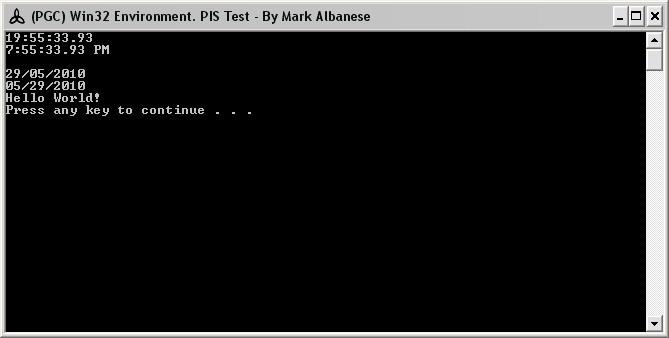
Above: PIE script running on a Windows XP 32-bit operating system,
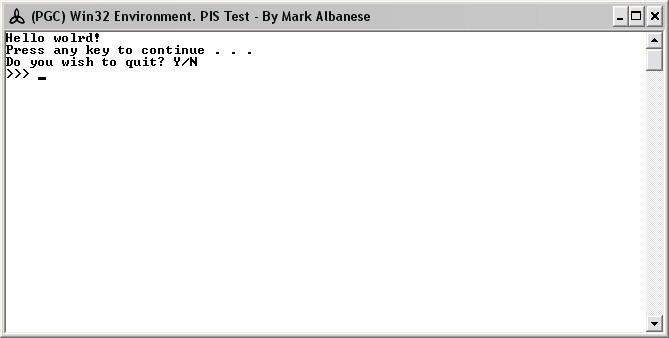
Above: PIE script running on a Windows XP 32-bit operating system,
| Status: In Development | Version: alpha v0.1 |
| Licence: FreeBSD, Open Source | Documentation: N\A |
| Downloads: N\A | Website: N\A |
Standard Operating Environment, Often shorten to SOE or PI-SOE is a Platform Independent graphical user interface, developed for the VAUIOS operating system, but designed to be run on any other platform, its purpose is to allow users with the same desktop environment/behaviour as they would get on the VAUIOS operating system, on any other platform.

Above: SOE 1.9 running on a Linux based system,
| Status: In Development | Version: alpha v1.9 |
| Licence: FreeBSD, Open Source | Documentation: N\A |
| Downloads: N\A | Website: N\A |
USL (an abbreviation for Universal Software Language) is a general-purpose programming language, design to be compatible with other natural human languages, such as (but not limited to) the French, English, Spanish, Russian, Arabic, Bengali, and Portuguese languages.
USL is designed for The VAUIOS Operating system, but it is planned to be platform independent, as well as free and open source.
An example of USL in English,
//USL Example English
// <CCP>
// <ccp_version="0.1 - Bata" />
// <author="Authors Name" />
// <date written="28.05.10" last_revision="01.04.11" />
// <version="1.0" />
// <svn="false" />
// <cvs="false" />
// <component owner="false" name="MAIN.EN.USL.C" />
// <language software="USL Native" natural="English" />
// <comments="My Hello World Project" />
// </CCP>
#Declaration
{
@Reference <StandardIO.usl.h>
}
start main()
{
output(writeline, "Hello World!");
}
Instruction Terminate();
An example of USL in French,
//USL Exemple français
// <CCP>
// <ccp_version="0.1 - Bata" />
// <auteur="Authors Name" />
// <date écrit="28.05.10" dernier_révision="01.04.11" />
// <version="1.0" />
// <svn="faux" />
// <cvs="faux" />
// <composant propriétaire="faux" mom="PRINCIPAL.FR.USL.C" />
// <langue logiciel="USL Indigène" natural="Français" />
// <commentaires="Mon bonjour tout le monde Project" />
// </CCP>
#Déclaration
{
@Référence <StandardIO.usl.h>
}
Démarrer Principal()
{
Sortie(DonnezVotreLigne, "Bonjour, tout le monde!");
}
Instruction Fin();
- USL is also designed for The PGC or PIE governing client, and maybe compiled into .PIE or Platform Independent Executable Byte-code.
- USL can also be compiled into platform specific Executable Byte-code.
- USL has also been made compatible with Code Control Protocol.
- USL also supports the User Interface Mark-up Language.
| Status: In Development | Version: alpha v0.1 |
| Licence: FreeBSD, Open Source | Documentation: N\A |
| Downloads: N\A | Website: N\A |
| Website Version : 0.5 | Page Version : 1.0 | Last Updated : 02/01/2011 |
|---|
This Website, logo and design contents Copyright © 2008-2010 XASE Labs - All rights reserved. Reproduction of any material on this site without permission is prohibited and may result in legal ramification. please contact the webmaster by E-mail at xase-labs@users.sourceforge.net for more information and permission. Copyright © 2008-2010 XASE Labs - All rights reserved. |


